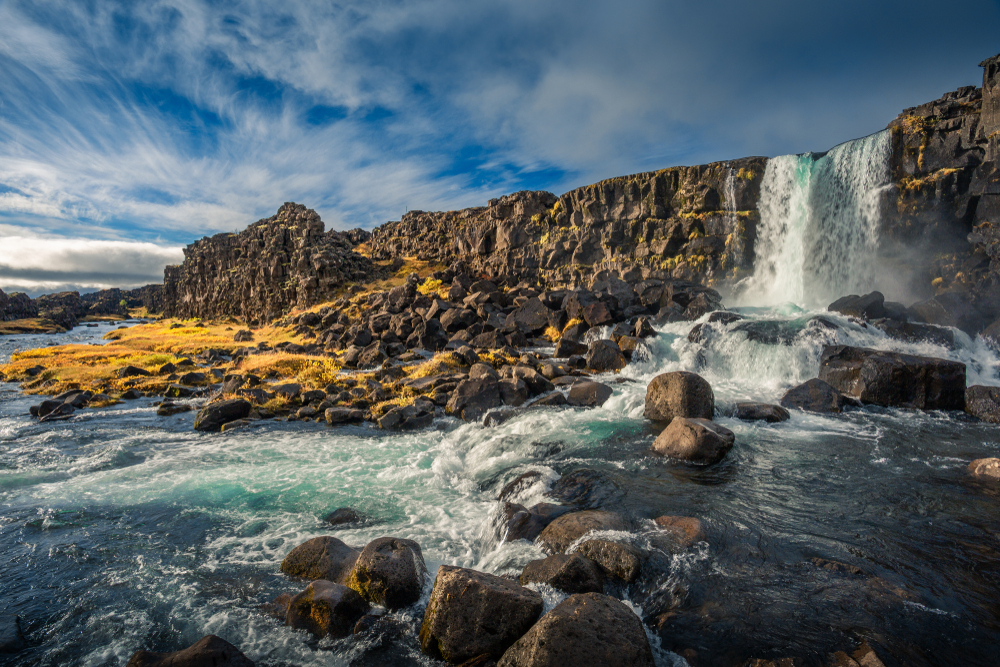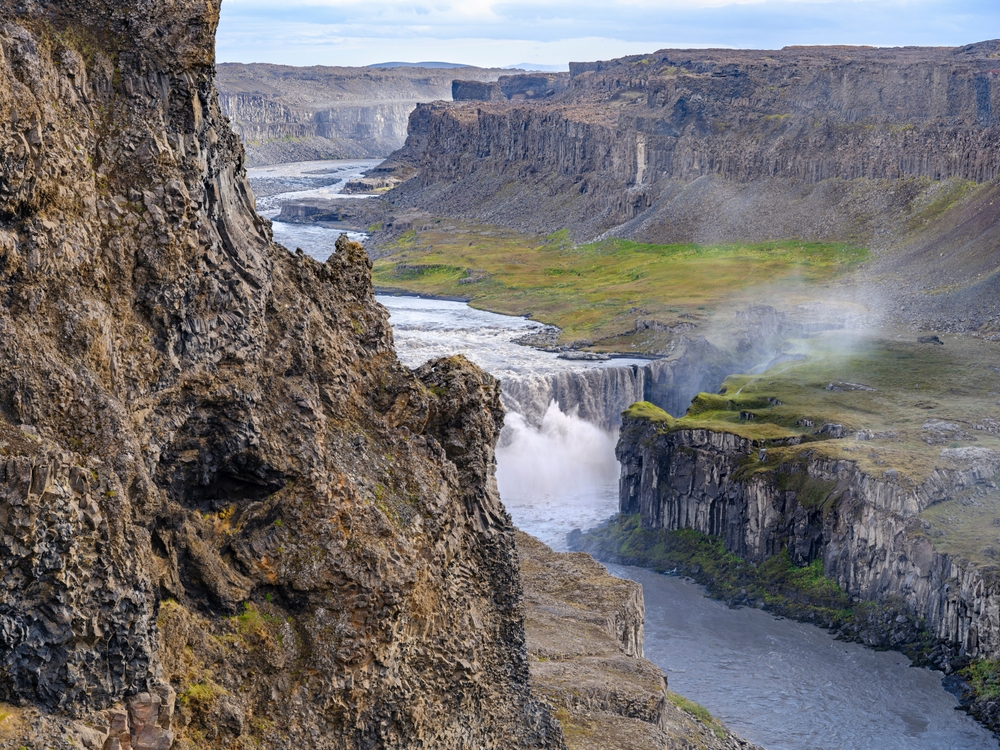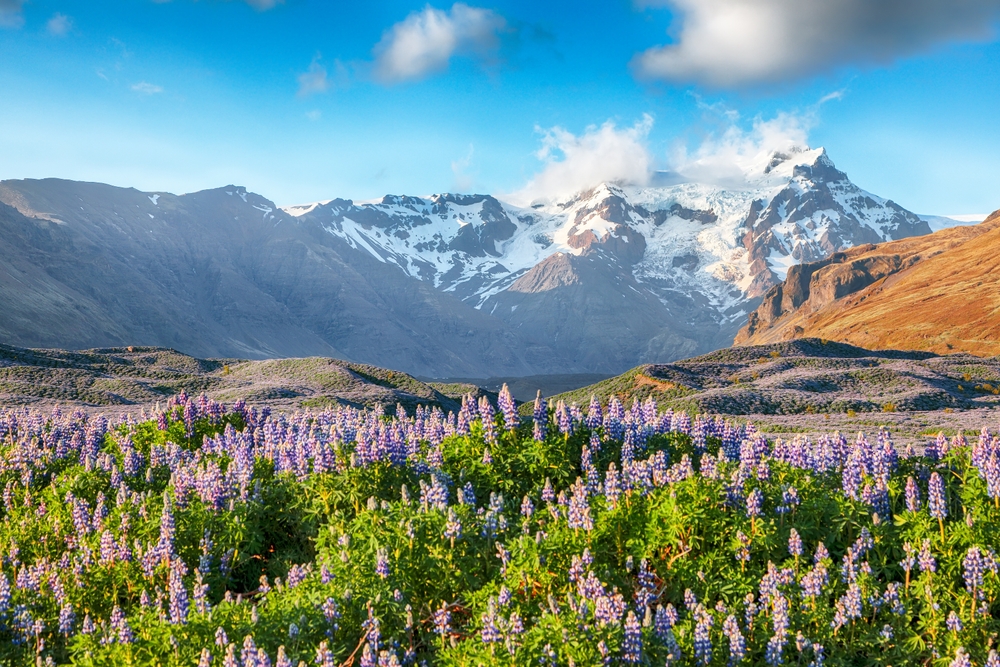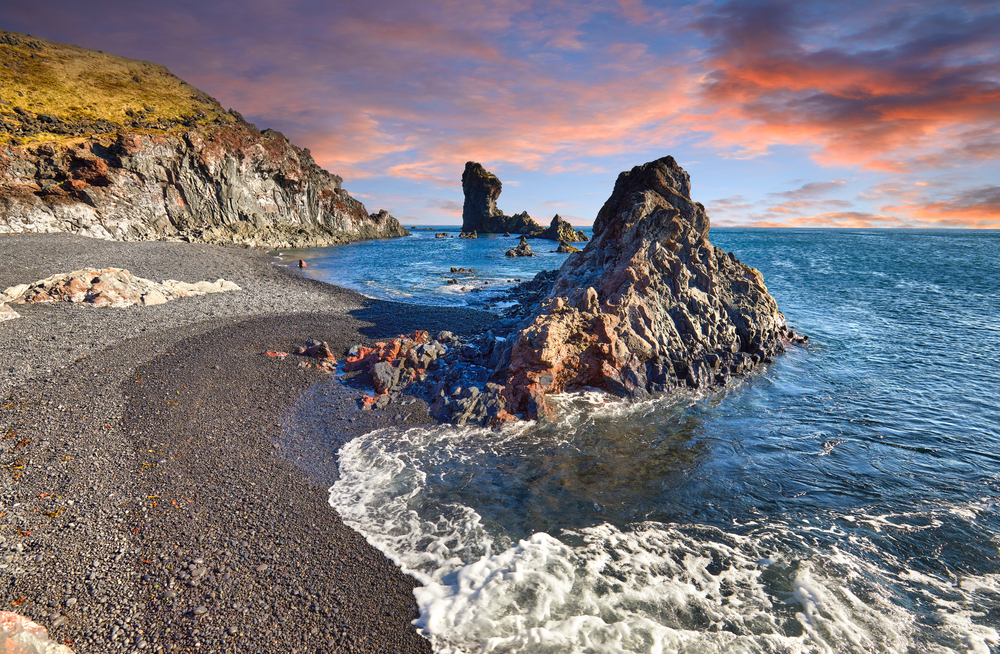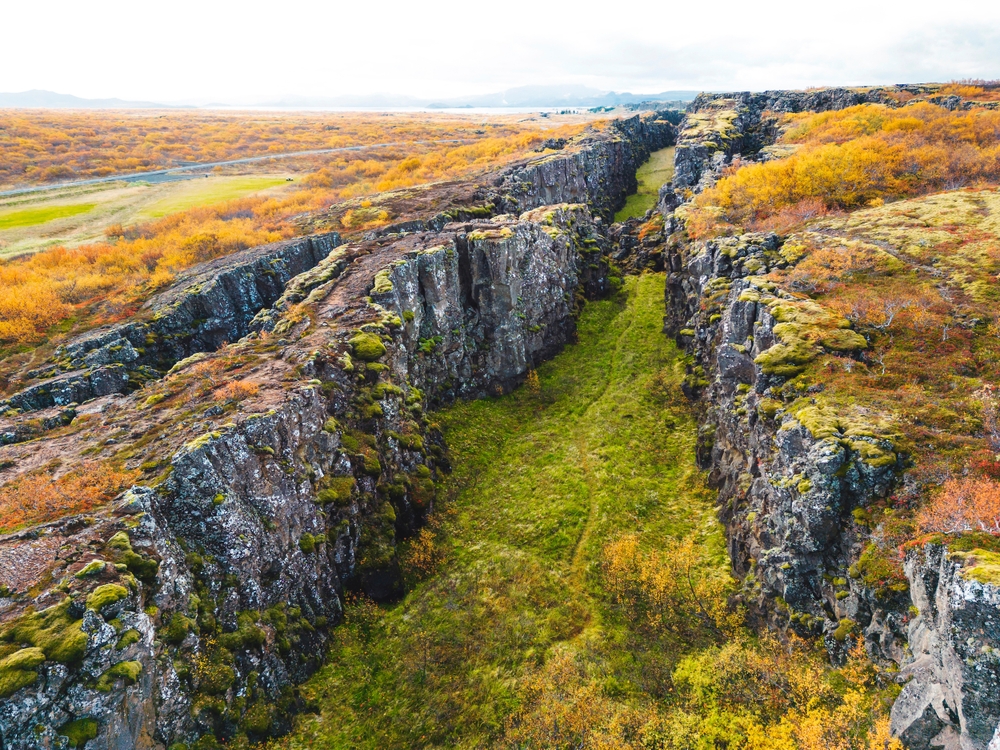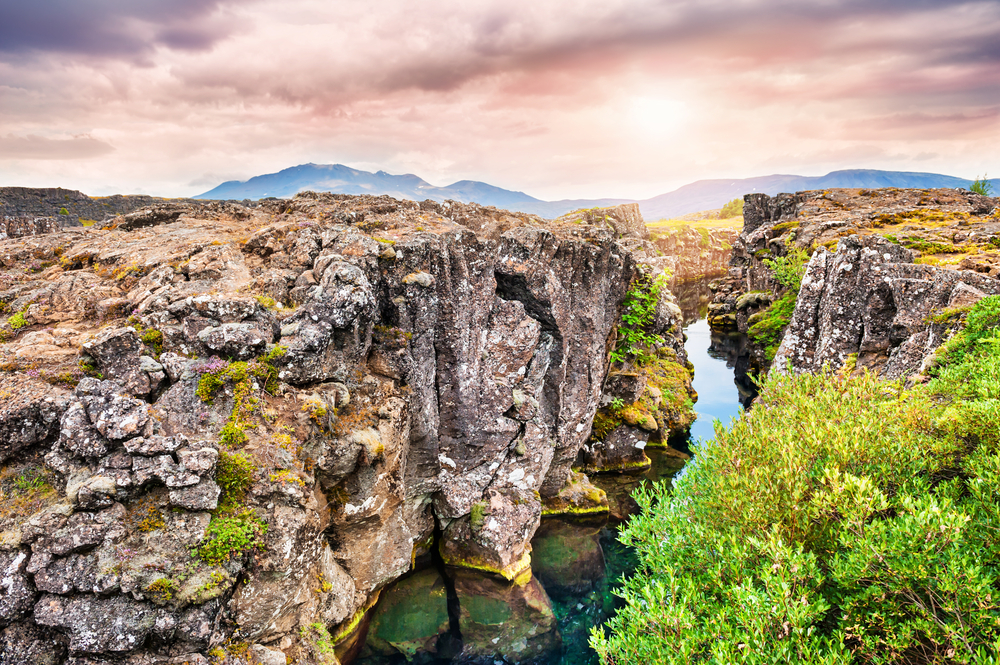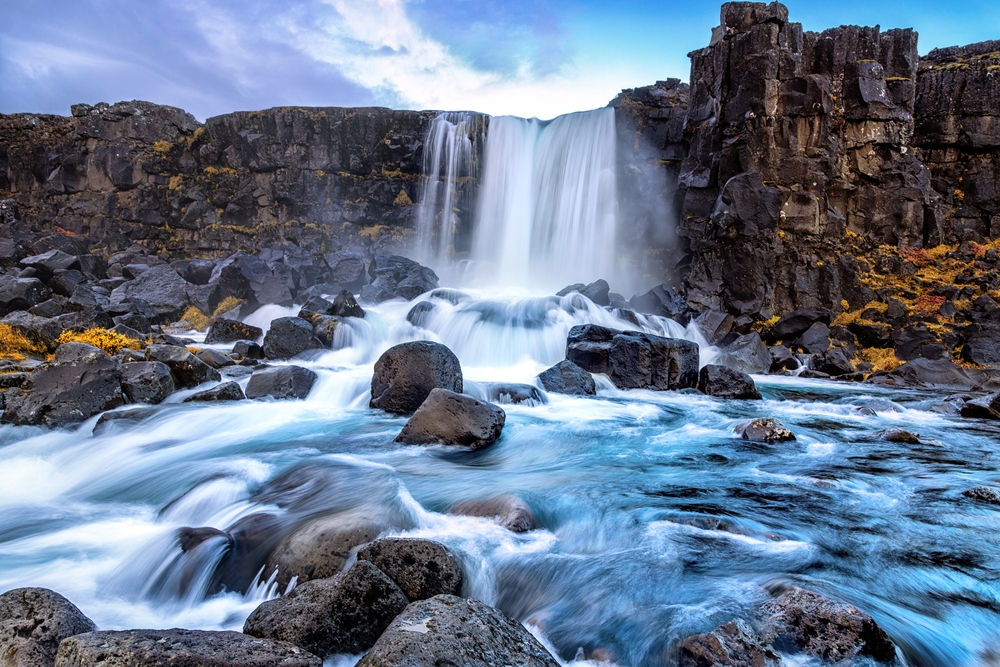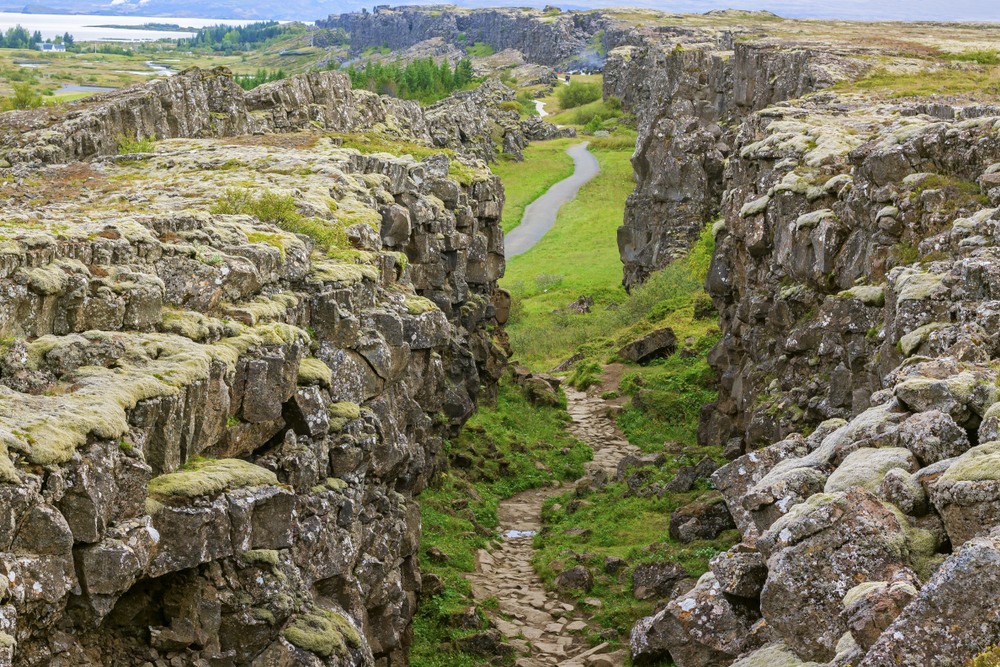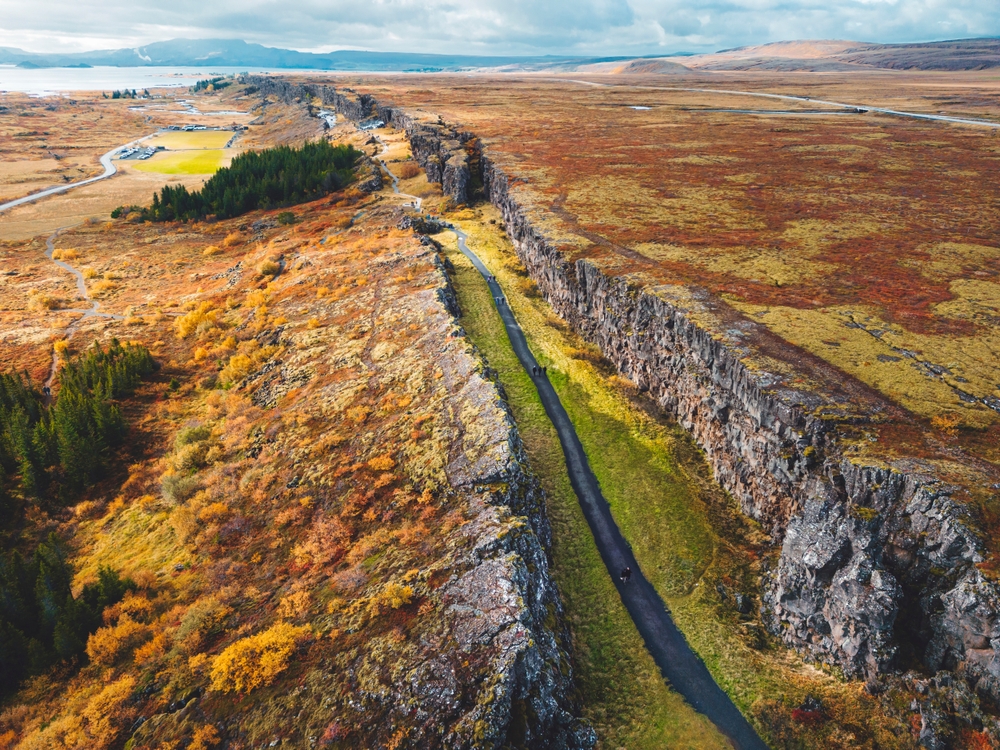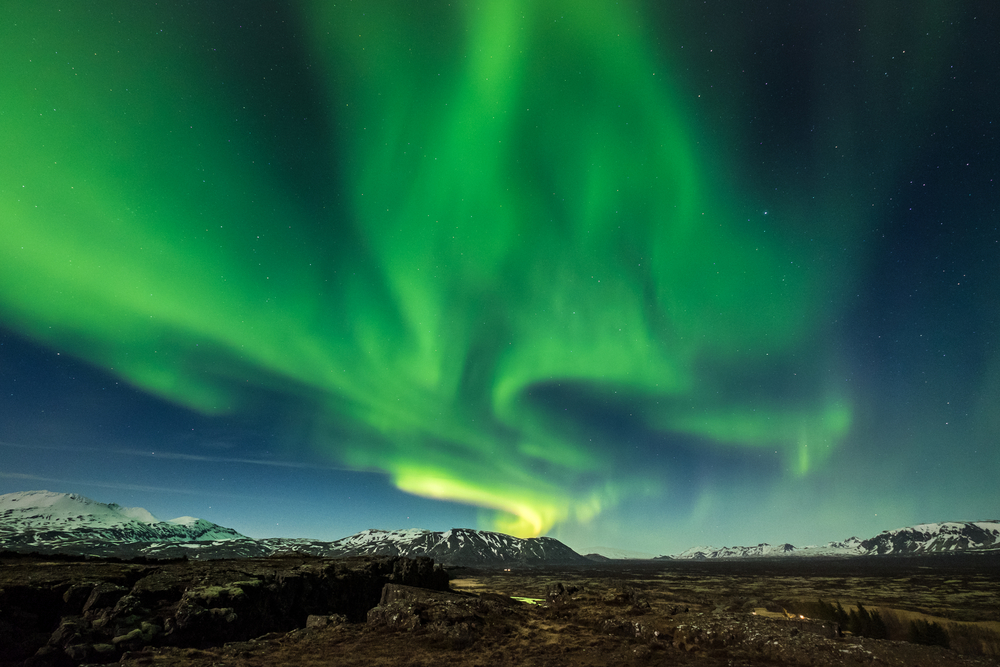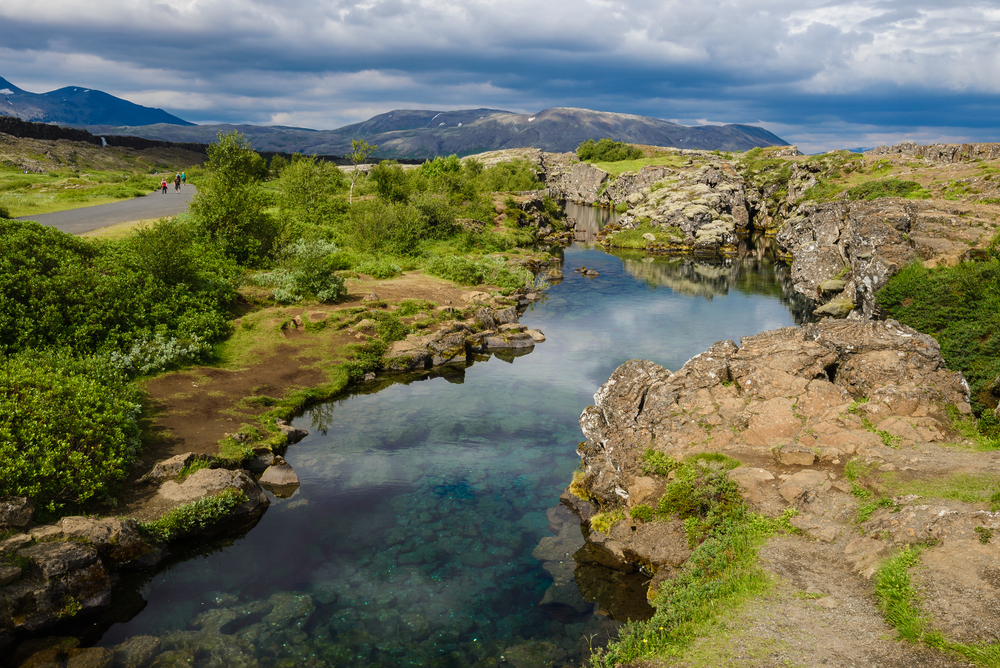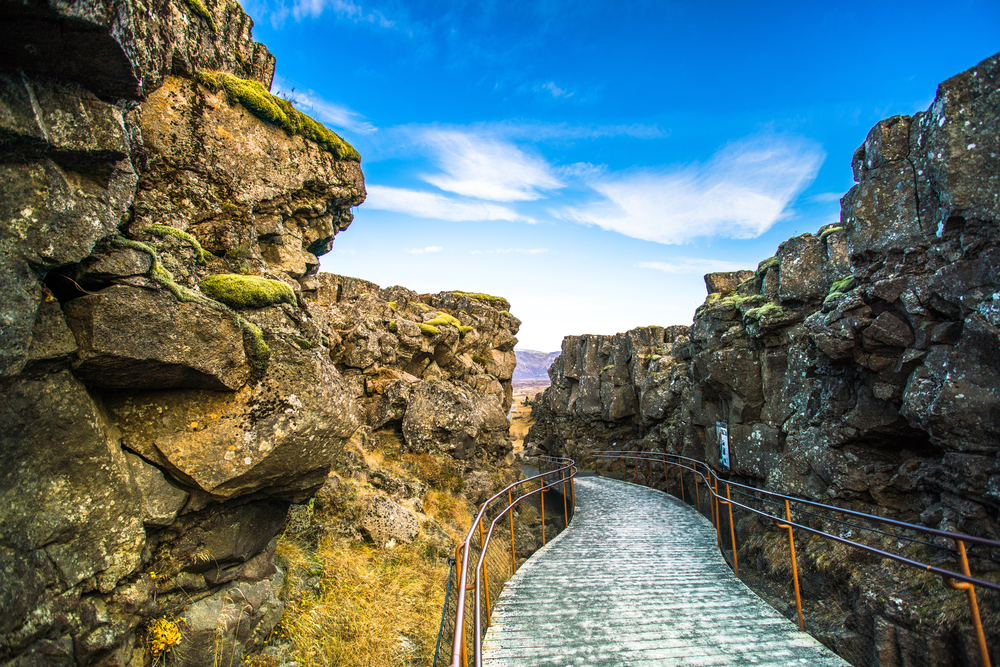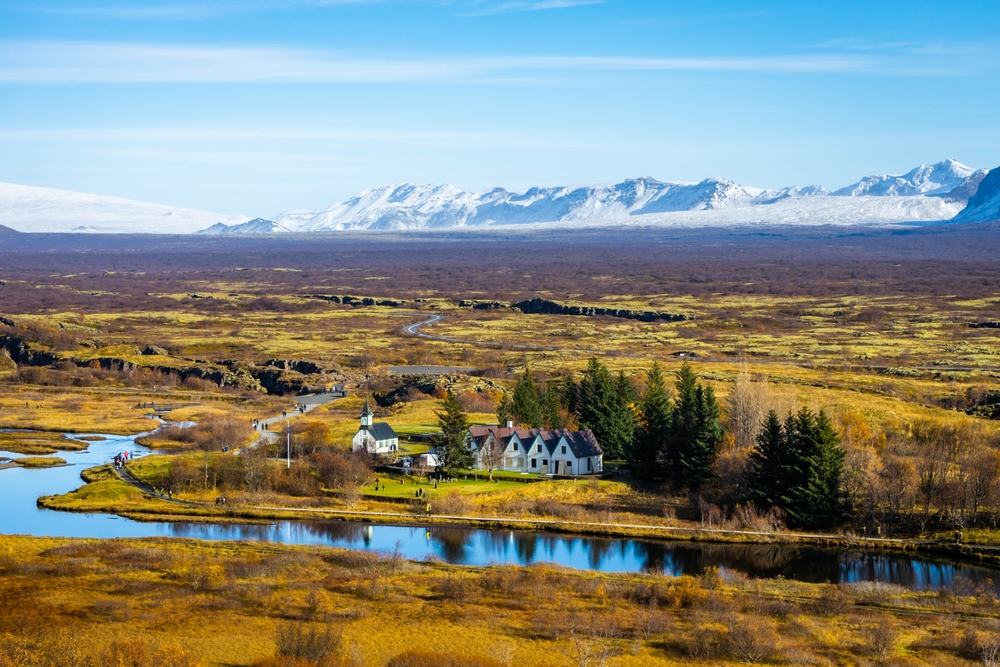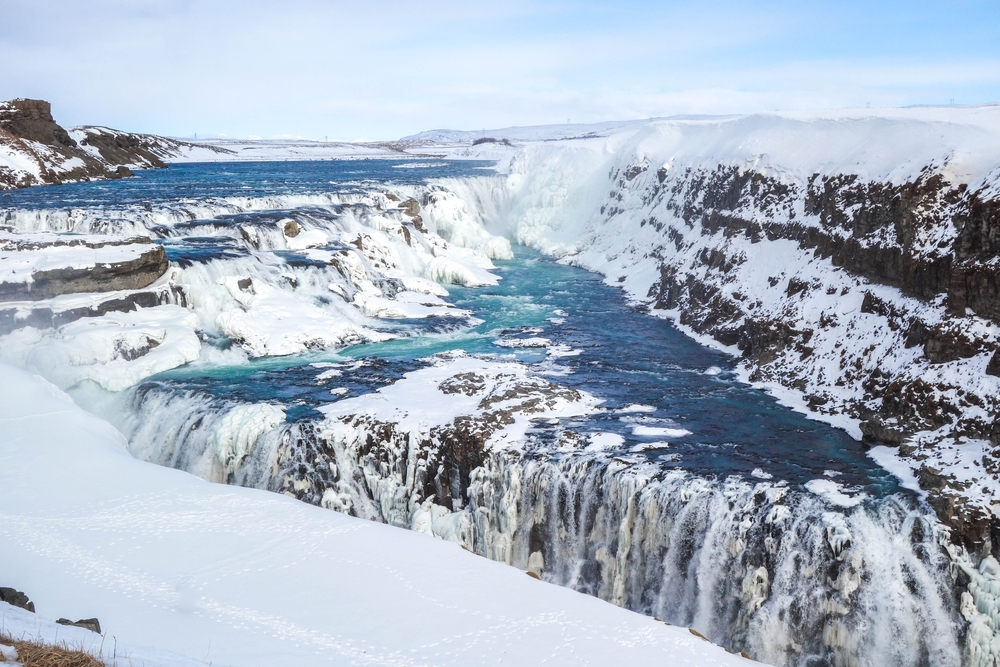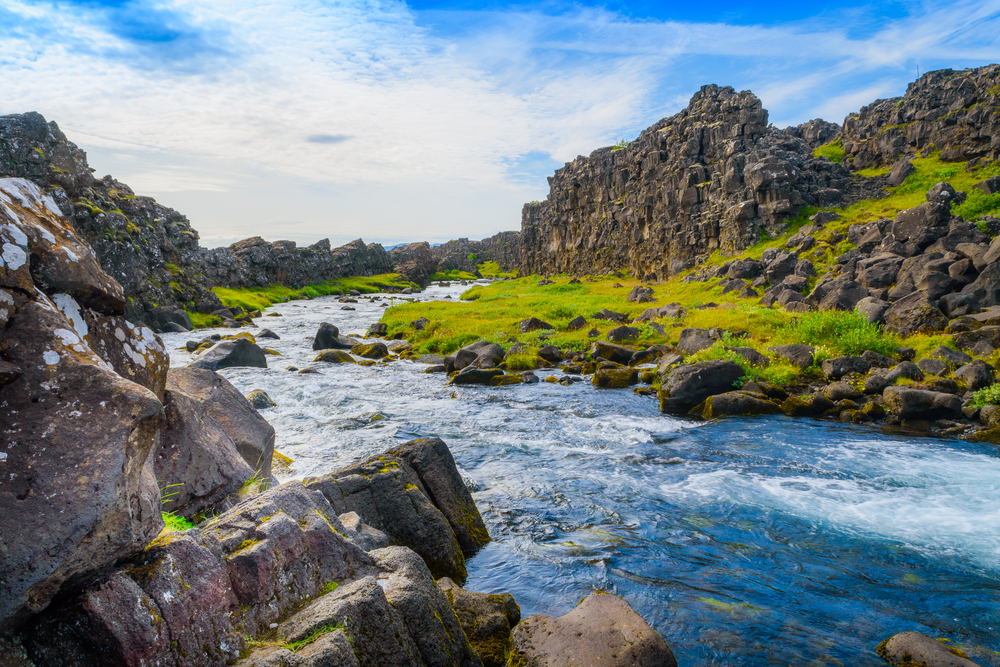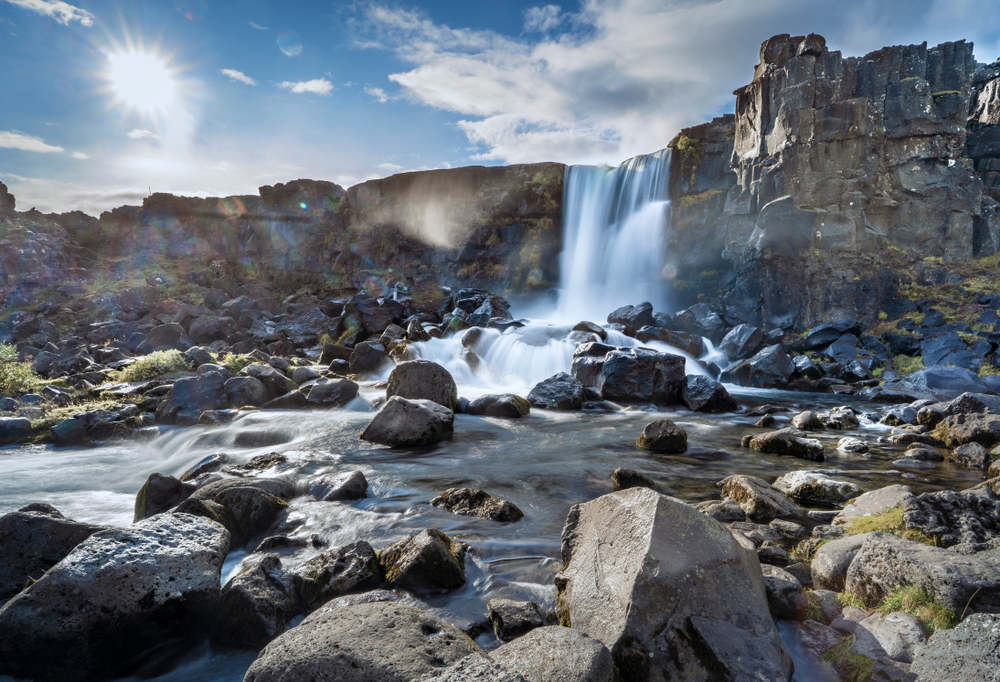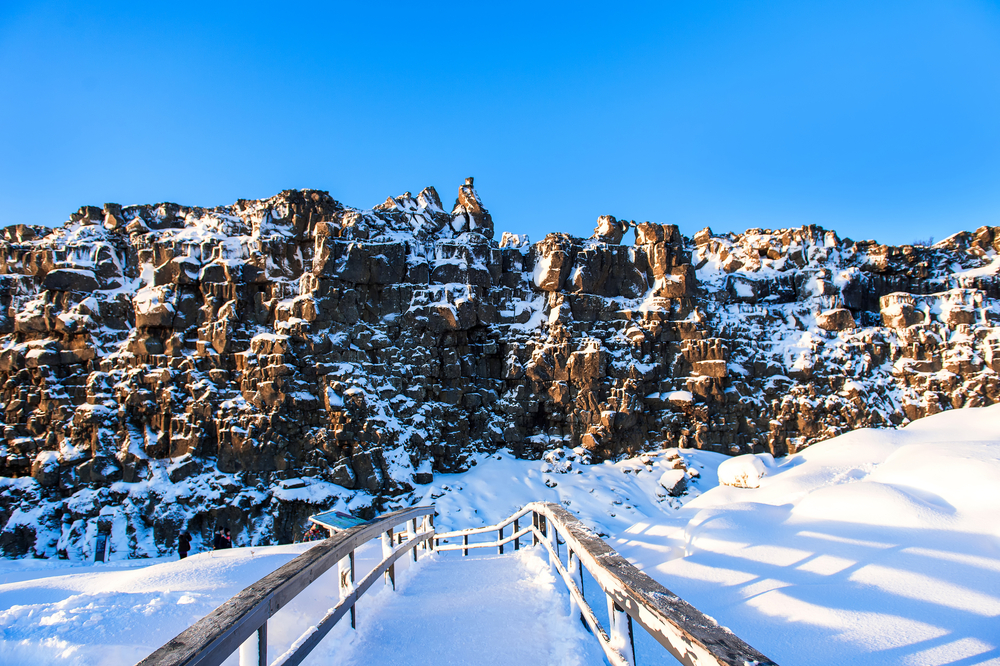Thingvellir Overview
Thingvellir National Park (in Icelandic: Þingvellir þjóðgarður) is located in southwestern Iceland, approximately 25 miles (40 kilometers) northeast of the capital, Reykjavík. Established in 1930, it is one of Iceland’s most historically and geologically significant national parks, covering an area of approximately 92 square miles (237 square kilometers).
Thingvellir is a UNESCO World Heritage Site due to its historical importance as the location of the Alþingi, the world’s first democratic parliament, which was founded in AD 930.
The terrain of Thingvellir or Þingvellir is a dramatic showcase of Iceland’s volcanic origins. The park is dominated by rugged cliffs, lava fields, and the striking Almannagjá gorge, a visible boundary between the tectonic plates. Þingvallavatn, Iceland’s largest natural lake, lies within the park and reflects the surrounding mountains in its crystal-clear waters.
The lake’s Silfra fissure is particularly famous, offering exceptional visibility for divers and snorkelers. The park’s vegetation consists of hardy mosses, low-growing shrubs, and patches of birch and willow trees, adapted to the subarctic climate. Seasonal wildflowers add bursts of color to the otherwise muted palette of the landscape.
Þingvellir is home to an array of wildlife, particularly bird species and fish. Lake Þingvallavatn supports a population of Arctic char and brown trout, while the surrounding cliffs and meadows are frequented by birds like golden plovers, redwings, and meadow pipits.
Although large mammals are rare in this region, visitors might spot Arctic foxes, the only native terrestrial mammal in Iceland, along with occasional reindeer introduced in other parts of the country. The park’s ecosystem is a delicate balance, with its flora and fauna adapted to the harsh Icelandic environment.
A key feature of Þingvellir is its historical importance. It was the site of the Alþingi, Iceland’s first national assembly, established in 930 AD, making it one of the oldest parliaments in the world.
The Alþingi met here for centuries, cementing Þingvellir’s status as the heart of Icelandic culture and governance. Visitors can explore remnants of the ancient assembly site, adding a historical layer to their experience of the park.
Þingvellir offers a variety of ways for visitors to engage with its landscapes and history. Hiking trails wind through the park, leading to viewpoints like Hakið, where panoramic vistas of the rift valley unfold. Diving and snorkeling in Silfra fissure provide unforgettable underwater adventures, while guided tours delve into the park’s history and geology. Wintertime offers opportunities for exploring the snow-draped scenery and witnessing the northern lights.
Conservation is a priority at Þingvellir, with efforts focused on preserving its unique geological and cultural heritage. Challenges include managing the impact of increasing tourism while protecting its fragile ecosystems. Successful conservation initiatives have included trail restoration, controlled access to sensitive areas, and educational programs to raise awareness about sustainable tourism practices.
Park Map
Thingvellir National Park Highlights
Engaging Thingvellir National Park
Sources
- Britannica, Thingvellir, https://www.britannica.com/place/Thingvellir, retrieved August 2024.
- Guide to Iceland, Thingvellir National Park, https://guidetoiceland.is/travel-iceland/drive/thingvellir, retrieved August 2024.
- Park Site, Thingvellir National Park, https://www.thingvellir.is/en/, retrieved August 2024.
- UNESCO, Pingvellir, https://whc.unesco.org/en/list/1152/, retrieved August 2024.
- Visit Iceland, Thingvellir National Park, https://www.visiticeland.com/article/thingvellir, retrieved August 2024.








































































